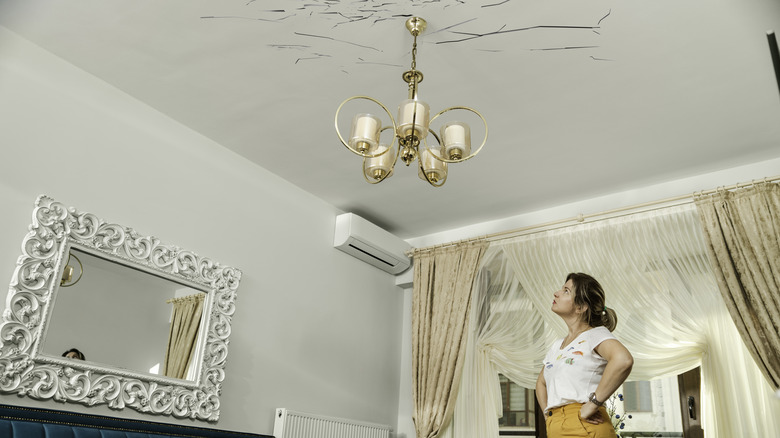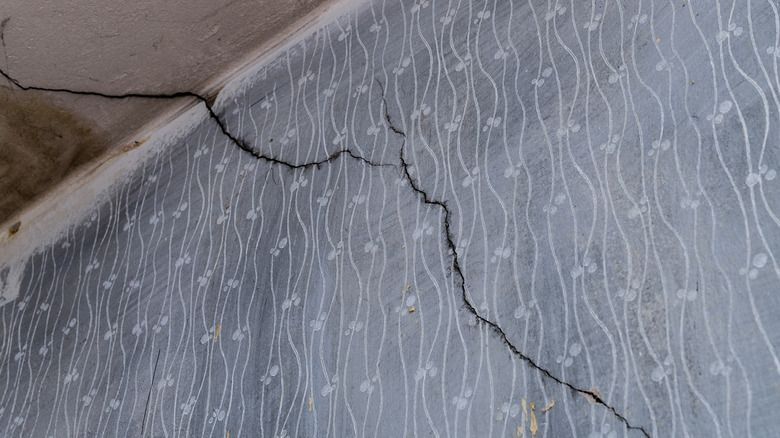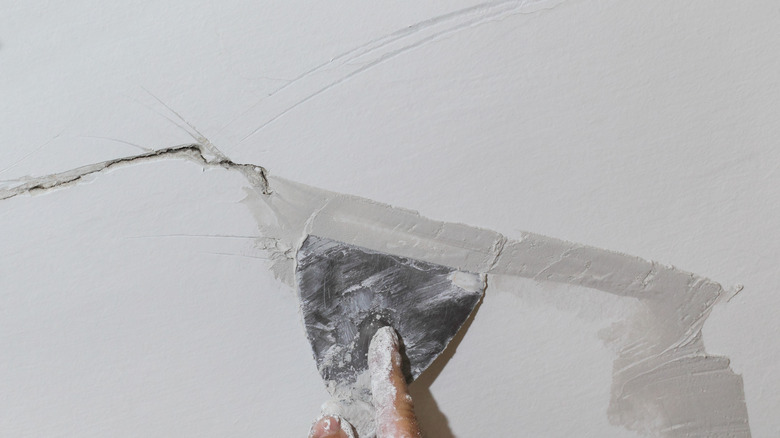Here's When You Should Start Worrying About The Cracks In Your Ceiling
How do you know when ceiling cracks are simply a surface issue or a sign of severe structural damage? Along with their location on the ceiling, you should also look at the size, shape, and number of cracks over time. Cracks are fairly common — especially in new homes — and often result from the natural settling of the substructure. However, if you notice that a crack widens to an eighth of an inch or more, or carries on down along the wall, then the situation might require a professional inspection as it can also point to serious issues with the roof or foundation.
On the other hand, smaller cracks in the corners of a room or along the edge of a wall are usually related to substandard drywall installation or poor-quality material, and can often be repaired relatively easily. Knowing if a crack is just a cosmetic issue or if it's something more serious is important, as resolving any structural problems with a property should be a homeowner's first priority.
Structural problems that cause cracks
One instance related to foundation damage is the appearance of a wide crack that stretches diagonally across the ceiling. If this scenario coincides with other indicators, such as doors or windows getting stuck, then it might mean the house is not settling evenly. Likewise, you might notice a tilting in the floors in some rooms, meaning part of the foundation needs to be raised and stabilized. Another indicator of critical building issues involves cracks in an area where the ceiling appears to be drooping. In this situation, you will need to inspect and repair the joists, especially if excess stress has been placed upon them from too much weight or after the removal of a load-bearing column or wall.
If you start to see cracks that have a brownish or yellowing pattern that resembles a trail of moisture, it is probably due to a leak in the roof or a water leak in the plumbing overhead. To avoid even more serious problems with moisture and mold, you'll need to figure out the exact cause and get the necessary repair completed.
Cracks that arise from minor issues
On the less severe end of the spectrum, cracks that are round and look like a spider's web do not usually pose a major problem. This minor cosmetic concern often stems from the thickness of the plaster or compound that was initially applied to the ceiling — if it's too dense, cracking can happen as a result. Fortunately, you can repair these cracks on your own by sanding down the old plaster to recreate a smooth surface and then filling and repainting the area.
Straight, thin cracks may look alarming, but like the web variety, they are usually the result of an error during the taping and mudding process. The repair is equally simple and involves adding a jointing compound to the affected area and smoothing the tape out. Alternatively, if these cracks were brought about by moisture, perhaps in a bathroom or another space that's exposed to water vapor, then you should cut out the old drywall and install a new piece. Although this measure is more extensive, it prevents a potentially more serious mold problem caused by dampness.


